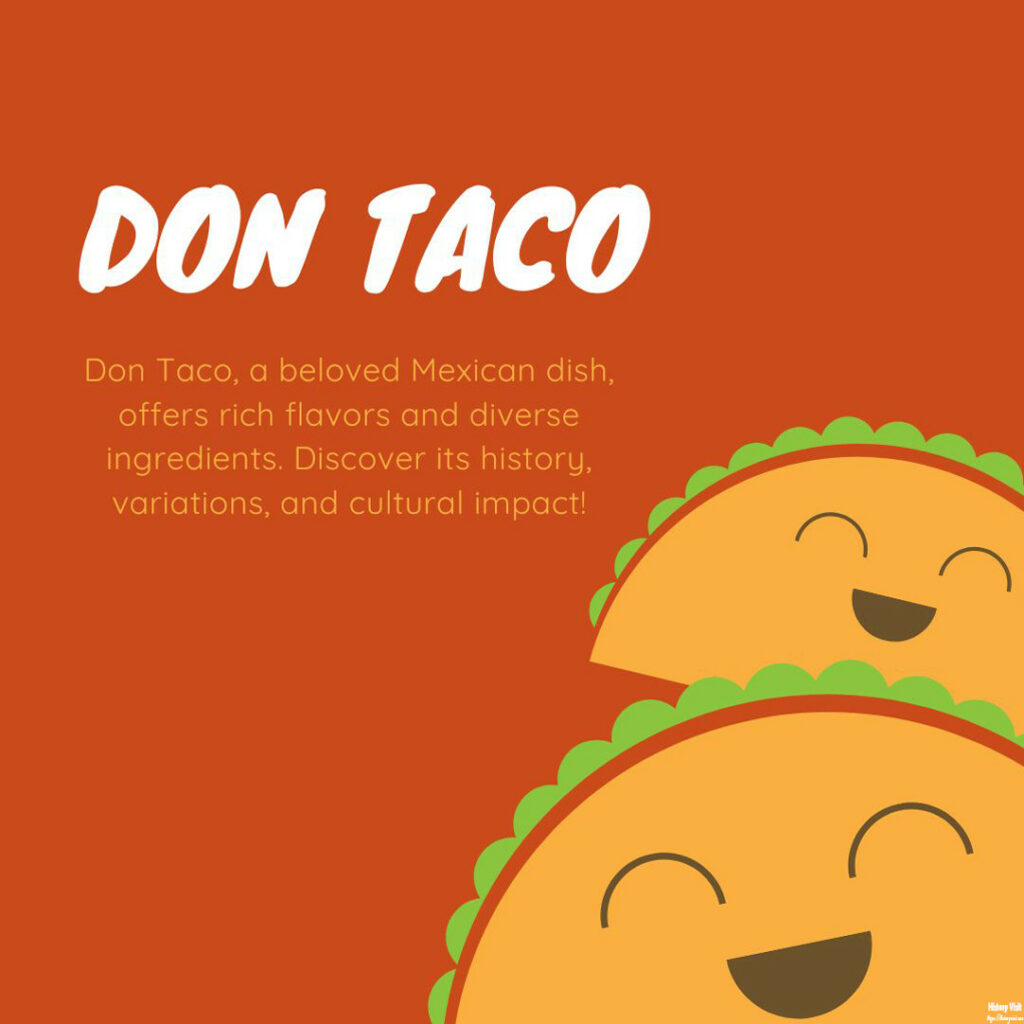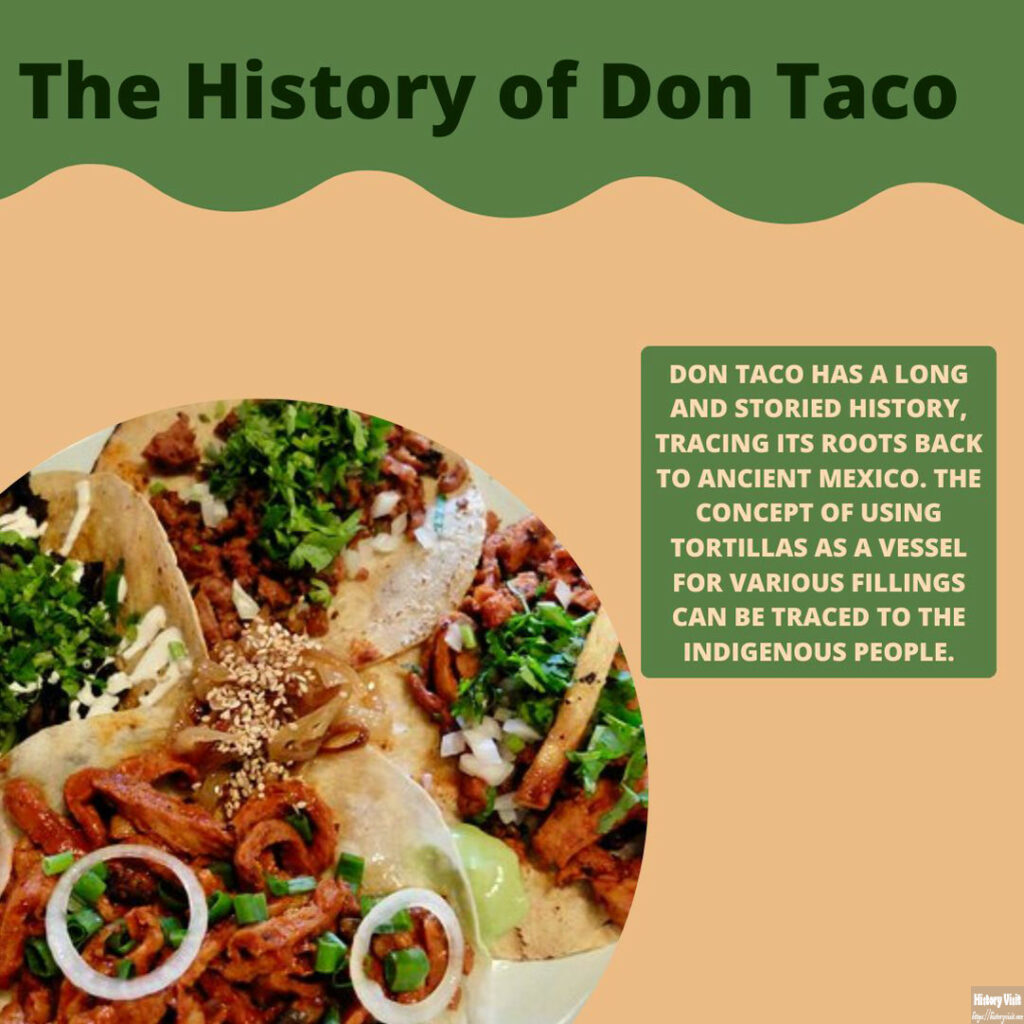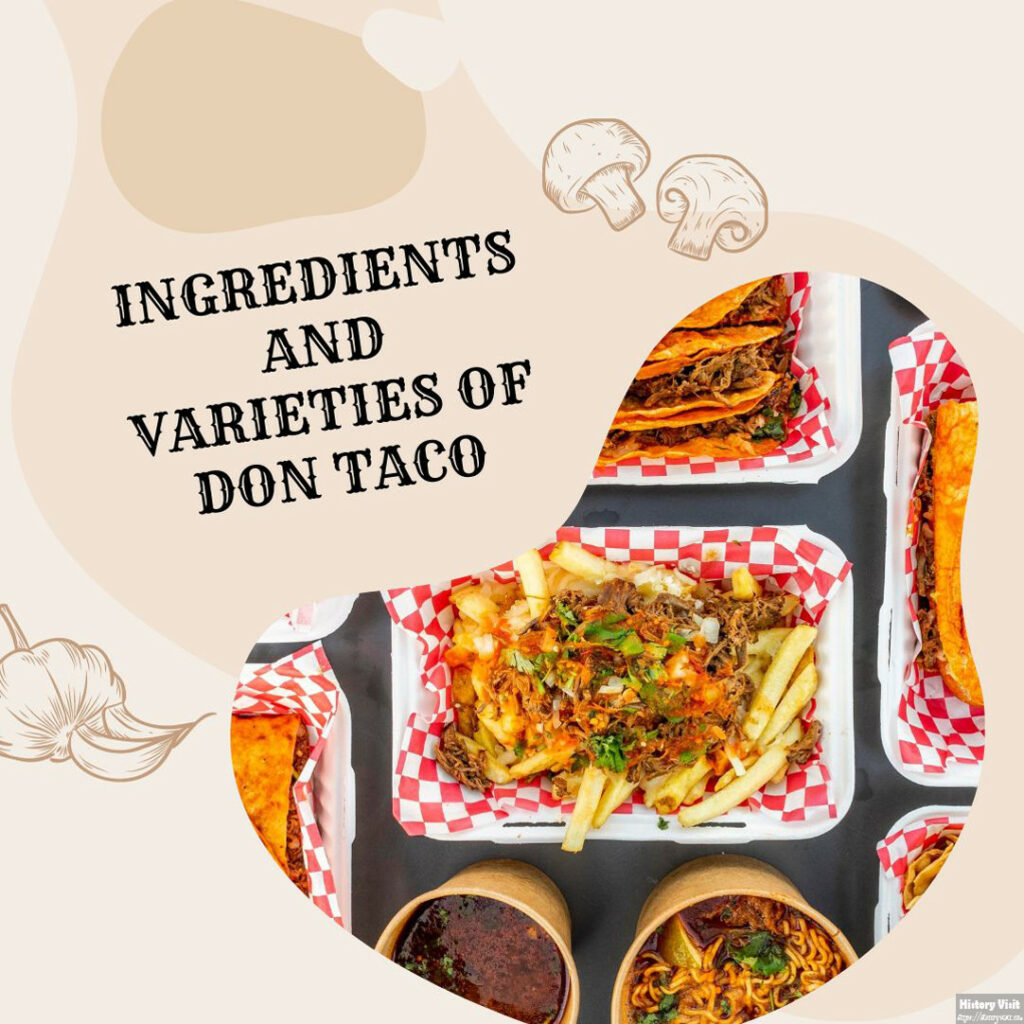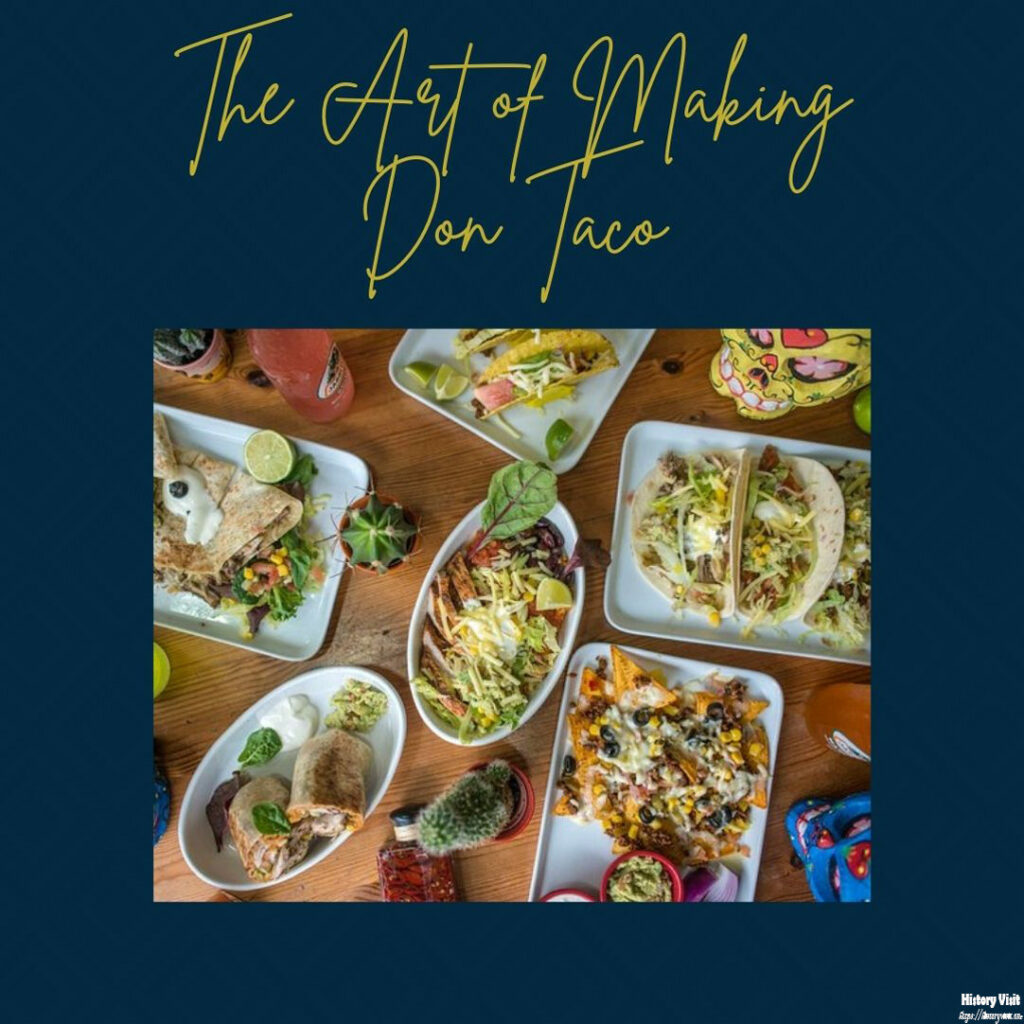Don Taco: The Tasty Treat Everyone’s Talking About!

Introduction
Don Taco has become a beloved name in the world of Mexican cuisine. This iconic dish, celebrated for its rich flavors and diverse ingredients, has captured the hearts of food enthusiasts worldwide. Whether it’s enjoyed at a bustling street market in Mexico or a cozy restaurant elsewhere, Don Taco offers a unique culinary experience. The name itself evokes a sense of tradition and authenticity, inviting people to explore the vibrant flavors that define this dish.
The origins of Don Taco are deeply rooted in Mexican culture. The word “taco” dates back to the indigenous peoples of Mexico, who used corn tortillas as a staple in their diet. Don Taco, as it is known today, has evolved from these humble beginnings, embracing a variety of fillings and toppings that reflect the rich culinary heritage of the region. This dish is more than just a meal; it’s a representation of Mexican culture and tradition.
The popularity of Don Taco has transcended borders, making it a global phenomenon. In recent years, the taco has been embraced by different cultures, each adding its unique twist. From fusion tacos to gourmet interpretations, the world of Don Taco is ever-expanding. This article will delve into the history, ingredients, preparation methods, and cultural significance of Don Taco, offering a comprehensive guide to this beloved dish.
The History of Don Taco

Don Taco has a long and storied history, tracing its roots back to ancient Mexico. The concept of using tortillas as a vessel for various fillings can be traced to the indigenous people. They utilized maize, a staple crop, to create tortillas, which were then filled with available ingredients like beans, chili peppers, and fish. These early forms of tacos were simple but nutritious, providing sustenance for the people.
The evolution of Don Taco continued with the arrival of the Spanish in the 16th century. The introduction of new ingredients such as pork, beef, and cheese influenced the development of tacos. The Spanish also brought with them new cooking techniques, which were integrated into Mexican cuisine. This period marked the beginning of what would become the modern taco, with a greater variety of fillings and flavors.
In the 19th century, the industrialization of Mexico led to the widespread availability of tortillas and other taco ingredients. Street vendors began selling tacos in urban areas, making the dish accessible to a broader audience. This era also saw the emergence of regional variations of Don Taco, each with its unique ingredients and preparation methods. The taco became a symbol of Mexican street food culture, beloved by people from all walks of life.
The 20th century witnessed the global spread of Don Taco. Mexican immigrants brought their culinary traditions with them, introducing tacos to new audiences. The dish quickly gained popularity, particularly in the United States, where it was embraced as a convenient and delicious fast food option. Today, Don Taco is celebrated worldwide, with countless variations and innovations that continue to delight food lovers.
Ingredients and Varieties of Don Taco

The ingredients used in Don Taco are as diverse as the dish itself. Traditional tacos are typically made with corn or flour tortillas, which serve as the base. Corn tortillas, made from masa harina, are the more traditional choice and are known for their earthy flavor. Flour tortillas, made from wheat, offer a softer texture and are often used for larger tacos.
The fillings are what truly define Don Taco. Classic options include carne asada (grilled beef), carnitas (braised pork), pollo (chicken), and pescado (fish). Each filling is seasoned with a blend of spices and herbs, often including chili powder, cumin, garlic, and cilantro. Vegetarian options, such as grilled vegetables, beans, and cheese, are also popular, catering to a wide range of dietary preferences.
In addition to the fillings, toppings play a crucial role in enhancing the flavor and texture of Don Taco. Common toppings include salsa, guacamole, sour cream, and shredded lettuce. Fresh ingredients like diced onions, tomatoes, and cilantro are also frequently used. These toppings add a burst of freshness and contrast to the rich, savory fillings, creating a balanced and satisfying dish.
Regional variations of Don Taco showcase the versatility of this dish. In Baja California, fish tacos are a popular choice, featuring battered and fried fish with a creamy sauce. In the Yucatan Peninsula, cochinita pibil tacos are made with slow-cooked pork marinated in achiote paste. Each region of Mexico offers its unique take on the taco, highlighting local ingredients and culinary traditions.
The Art of Making

Making Don Taco is both an art and a science, requiring skill and attention to detail. The first step is preparing the tortilla, which serves as the foundation of the taco. Corn tortillas are made by mixing masa harina with water to form a dough. The dough is then rolled into balls and flattened into thin discs before being cooked on a hot griddle. Flour tortillas, on the other hand, are made by mixing flour, water, fat, and salt. The dough is rolled out and cooked in a similar fashion.
The filling is the heart of Don Taco, and its preparation varies depending on the type of taco being made. For meat tacos, the meat is typically marinated in a blend of spices and herbs before being grilled, roasted, or braised. The cooking process is crucial, as it ensures that the meat is tender and flavorful. For vegetarian tacos, ingredients like beans, cheese, and vegetables are seasoned and cooked to perfection.
Assembling Don Taco requires precision and creativity. The tortilla is filled with the desired filling, which is then topped with various garnishes. The toppings are added in a specific order to ensure even distribution of flavors. For example, salsa is often added first, followed by vegetables and herbs, and finally, a dollop of sour cream or guacamole. This careful layering creates a harmonious blend of flavors and textures.
Presentation is also an important aspect of making Don Taco. The finished tacos are often garnished with a slice of lime, a sprinkle of fresh herbs, or a drizzle of hot sauce. The colors and arrangement of the toppings make the dish visually appealing. While It is often served as a casual meal, it can also be presented in a more refined manner, suitable for fine dining settings.
Don Taco and Cultural Significance
Don Taco holds a special place in Mexican culture and beyond. It is not just a dish but a symbol of Mexican identity and heritage. The taco is celebrated in festivals, family gatherings, and everyday meals, showcasing its importance in Mexican society. The act of making and sharing tacos is a communal experience, bringing people together and fostering a sense of connection.
The cultural significance of Don Taco extends beyond Mexico. The dish has been embraced by people of all backgrounds, becoming a global icon of Mexican cuisine. In the United States, tacos are a staple in Tex-Mex cuisine, blending Mexican and American flavors. Taco trucks and restaurants are a common sight in many cities, serving a wide variety of tacos that cater to diverse tastes.
In addition to its culinary impact, Don Taco has influenced popular culture. The taco has been featured in movies, television shows, and even music. It has become a symbol of casual, fun dining and is often associated with celebrations and gatherings. The phrase “Taco Tuesday” has become a popular way to celebrate the dish, highlighting its versatility and appeal.
The cultural importance of Don Taco is also reflected in the efforts to preserve traditional recipes and techniques. Many chefs and food historians are dedicated to documenting and promoting the authentic preparation of tacos. This movement ensures that the rich history and traditions associated with Don Taco are passed down to future generations, preserving its legacy.
Modern Interpretations
The world of Don Taco is constantly evolving, with modern interpretations and innovations adding new dimensions to this classic dish. Chefs and home cooks alike are experimenting with unconventional ingredients and techniques, pushing the boundaries of what a taco can be. These innovations reflect the dynamic nature of food culture and the endless possibilities for creativity in the kitchen.
Fusion tacos are a popular trend, blending flavors and ingredients from different cuisines. For example, Korean-inspired tacos might feature bulgogi beef and kimchi, while Mediterranean-inspired tacos could include falafel and tzatziki sauce. These fusion creations offer a fresh take on Don Taco, appealing to adventurous eaters and showcasing the versatility of the dish.
Gourmet tacos have also gained popularity, elevating the humble taco to new culinary heights. High-end restaurants are serving tacos made with premium ingredients like lobster, duck, and truffle. These gourmet tacos often feature elaborate presentations and unique flavor combinations, offering a refined dining experience. The rise of gourmet tacos reflects the growing appreciation for the artistry and craftsmanship involved in making Don Taco.
Innovations
Vegan and vegetarian tacos are another area of innovation. With a growing demand for plant-based options, chefs are creating tacos that cater to vegan and vegetarian diets. Ingredients like jackfruit, tofu, and mushrooms are used to mimic the textures and flavors of traditional meat fillings. These plant-based tacos are not only delicious but also offer a healthy and sustainable alternative.
The influence of technology on the world of Don Taco cannot be overlooked. Social media platforms have played a significant role in popularizing unique taco creations and trends. Food bloggers and influencers share recipes, reviews, and photos, inspiring people to try new variations of Don Taco. This digital landscape has created a global community of taco enthusiasts, connecting people through a shared love of the dish.
Conclusion
Don Taco is more than just a meal; it is a cultural phenomenon that transcends borders and unites people through the love of food. From its ancient origins to its modern interpretations, the journey of Don Taco reflects the rich history and diversity of Mexican cuisine. This dish has evolved over time, embracing new ingredients and flavors while preserving its traditional roots.
The popularity of Don Taco shows no signs of waning. As the world continues to explore and celebrate different culinary traditions, the taco remains a beloved favorite. Whether enjoyed in a street market in Mexico or a trendy restaurant abroad, It’s offers a taste of Mexican culture and a unique culinary experience.
As we look to the future, the possibilities for Don Taco are endless. The dish will continue to inspire creativity and innovation, offering new flavors and experiences for food lovers. Whether traditional or modern, simple or gourmet, Don Taco will always hold a special place in the hearts of those who enjoy good food and the joy it brings.


